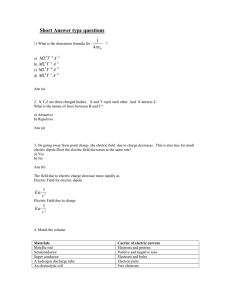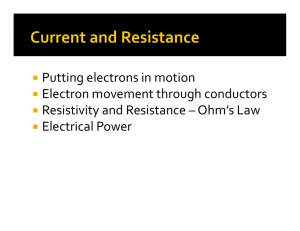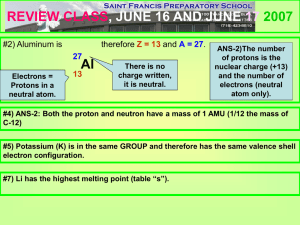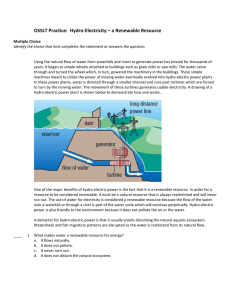Phy 132 - Assignment 4 A. 1. 2.
advertisement
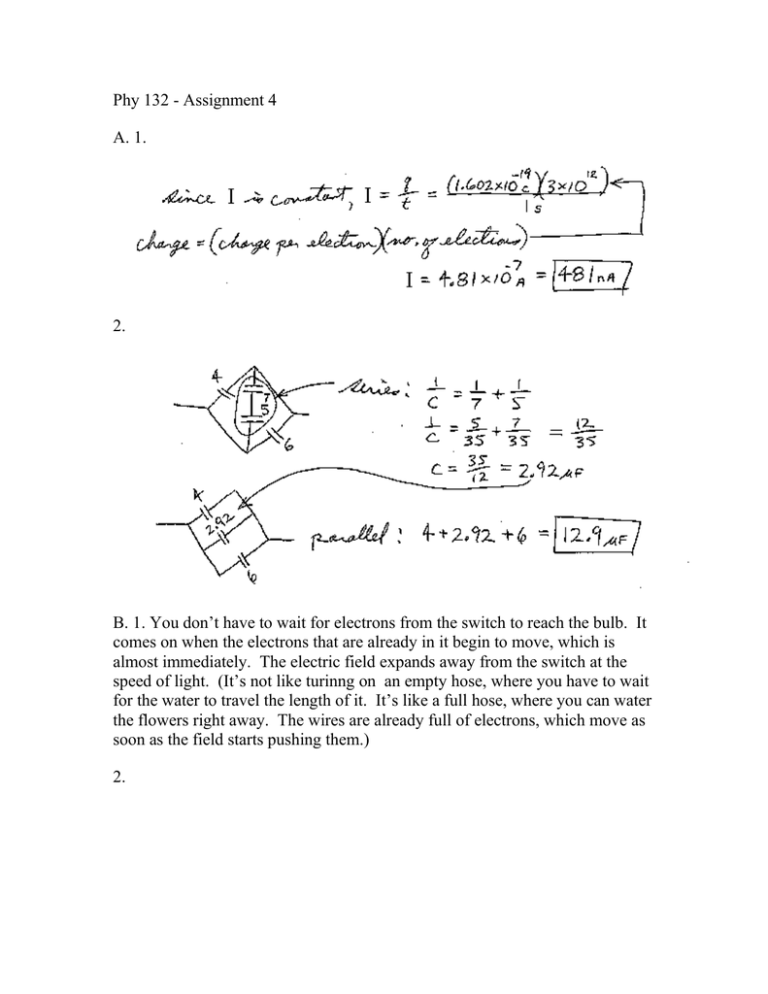
Phy 132 - Assignment 4 A. 1. 2. B. 1. You don’t have to wait for electrons from the switch to reach the bulb. It comes on when the electrons that are already in it begin to move, which is almost immediately. The electric field expands away from the switch at the speed of light. (It’s not like turinng on an empty hose, where you have to wait for the water to travel the length of it. It’s like a full hose, where you can water the flowers right away. The wires are already full of electrons, which move as soon as the field starts pushing them.) 2. C. 1. a. Q1 = Q2 . While they are being charged, charge flowing out of C1’s negative plate has no place to go except into C2’s positive plate. b. V1 < V2 . From C = Q/V, there is an inverse proportion between C and V if Q is the same on both. So, the bigger C has the smaller V. That is, a bigger capacitance doesn’t need as many volts to shove the same amount of charge in to it. 2. a. J = I/A = I/(πr2) = (8 x 10-6 A)/[π(.001m)2] = 8/π = 2.55 A/m2 ans. b. J = nqvd So, n = J /(qvd) = (2.546 A/m2)/[(1.602 x 10-19 c)(3.00 x 108 m/s)] = 5.30 x 1010 m-3 ans. (The unit, “per cubic meter," means electrons per cubic meter in this case.) (If you had a negative answer, due to using a minus sign in q, you are incorrect. The number of electrons in a cubic meter cannot be less than none. I was actually using the magnitude of a vector equation; if you include q's sign, you must also include the sign for the direction of J, which cancels it out.) D. 1. None. Capacitance is a fixed property of the capacitor, determined by things like the size and separation of its plates. (In C = Q/V, it’s Q which changes in response to a change in V, not C.) 2. 5000 V/m. The field between parallel plates is uniform; the same everywhere. (Notice that the formula E = Q/(ε0A) does not include any variable for where you are finding E.) 3. The 3Ω and the 6Ω are in parallel with each other: 1/R = 1/3 + 1/6 1/R = 2/6 + 1/6 1/R = 3/6 1/R = 1/2 so, R = 2Ω Putting 2 Ω where that group used to be, the right-hand part of the circuit is equivalent to this: These are in series, so they would be equivalent to a total of 4 + 2 + 9 = 15 Ω. Putting 15 Ω where that group used to be, we have: 1/R = 1/10 + 1/15 1/R = 3/30 + 2/30 1/R = 5/30 1/R = 1/6 so, R = 6.00 Ω E. 1. Resistivity is just a property of the material. Resistance also depends, in addition to the material, on the object's dimensions. 2. a. At t = 1.00 s, I = 12(12) + 5 = 17.0 A (ans.) b. J I A 17.0 A ( 2cm 2 ) 1m 2 85 000 A/m2 100cm F. 1. 2. From ρ = RA/l , R = ρl /A . Look up resistivity of tungsten in table in the book. By Ohm's law, I = V/R = (.900 V)/(.140 Ω) = 6.43 A ans.
